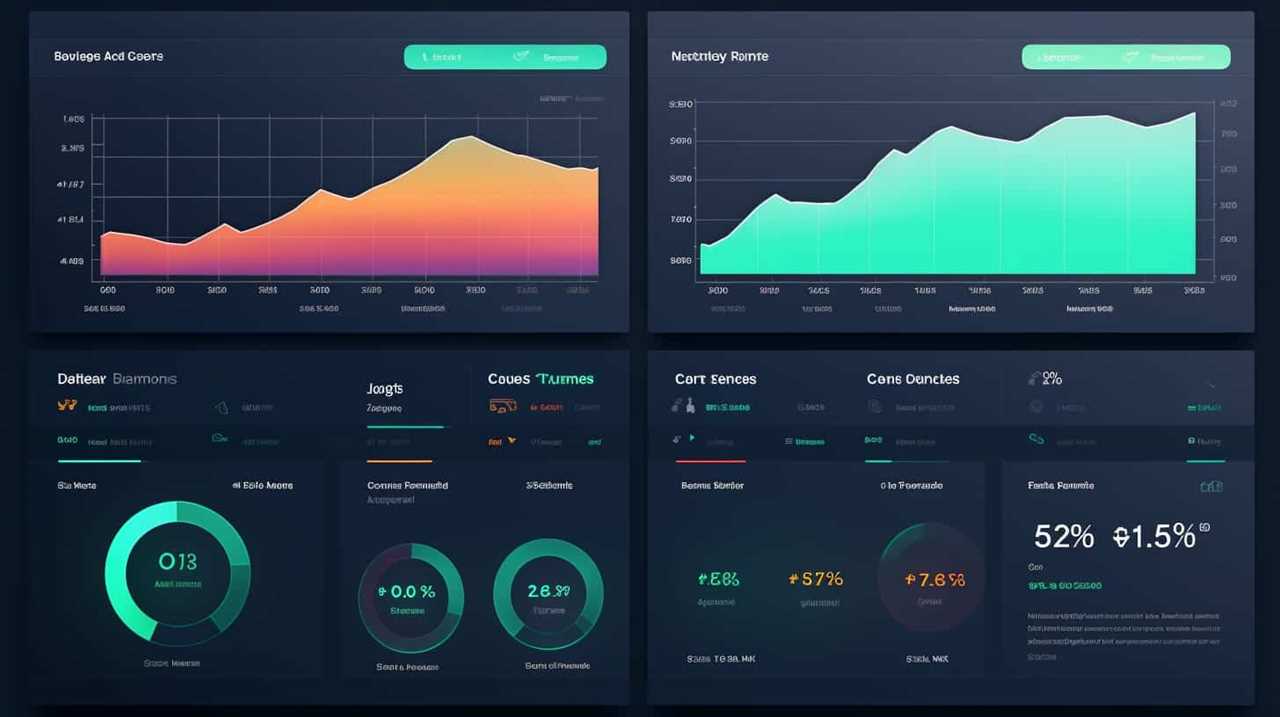Curious about the meanings of SEO, SEM, and SMO? Fear not, we’ve got all the details you’re looking for!
In this article, we’ll delve into the world of search engine optimization (SEO), search engine marketing (SEM), and social media optimization (SMO).
Get ready to master these essential digital marketing strategies that can boost your online presence and drive traffic to your website.
So, let’s dive in and unravel the mysteries behind SEO, SEM, and SMO!

Key Takeaways
- SEO focuses on optimizing website content, meta tags, and backlinks to improve organic search rankings and increase visibility and traffic.
- SEM involves paid search advertising, targeting specific keywords and demographics to achieve immediate visibility on search engine results pages (SERPs) and drive traffic and improve online presence.
- SMO focuses on optimizing a brand’s presence on social media platforms, including creating and sharing high-quality content, actively participating in social media conversations, and encouraging social sharing to enhance brand visibility and engagement.
- Integrating SEO, SEM, and SMO strategies can maximize online visibility, reach the target audience effectively, improve overall online presence, and help businesses connect with customers on a more personal level.
The Basics of SEO
In our exploration of the basics of SEO, let’s dive into the key factors that determine search engine rankings.
One of the most important aspects of SEO is keyword research. Understanding the keywords that your target audience is searching for allows you to optimize your website’s content accordingly. By incorporating these keywords strategically throughout your website, you increase the chances of being ranked higher in search engine results.
Another crucial element of SEO is on-page optimization techniques. This involves optimizing various elements on your web pages, such as title tags, meta descriptions, headings, and URL structure. By optimizing these elements, you make it easier for search engines to understand the content of your website and rank it accordingly.
Now that we understand the importance of keyword research and on-page optimization techniques, let’s move on to the next section where we’ll explore the concept of SEM and its benefits.

Understanding SEM and Its Benefits
Let’s explore the benefits of SEM, starting with three key advantages it offers for businesses.
Understanding SEM strategies is crucial in online marketing because it allows businesses to increase their visibility and reach their target audience effectively.
Firstly, SEM helps businesses achieve immediate results by placing their ads at the top of search engine results pages (SERPs), driving traffic to their websites instantly.
Secondly, SEM allows businesses to target specific keywords and demographics, ensuring their ads are shown to the right audience at the right time. This targeted approach increases the chances of conversions and leads to a higher return on investment (ROI).

Lastly, SEM provides valuable data and insights that can be used to optimize campaigns and improve overall marketing strategies.
How SMO Can Boost Your Online Presence
When it comes to boosting our online presence, Social Media Optimization (SMO) plays a crucial role.
Unlike Search Engine Optimization (SEO), which focuses on improving website visibility on search engines, SMO aims to optimize our presence on social media platforms.
SMO Vs. SEO: Differences
We’ll now explore the differences between SMO and SEO and how SMO can enhance our online presence.

While both SMO (Social Media Optimization) and SEO (Search Engine Optimization) are crucial components of digital marketing, they serve different purposes. SEO focuses on improving a website’s visibility and ranking on search engine results pages through strategies like keyword research, on-page optimization, and link building.
On the other hand, SMO is centered around leveraging social media platforms to increase brand awareness, engage with the audience, and drive traffic to the website. SMO involves activities such as creating and sharing high-quality content, building a strong social media presence, and encouraging social sharing.
In today’s digital landscape, SMO plays a vital role in digital marketing by complementing SEO efforts and maximizing the online visibility and reach of a brand.
Benefits of SMO
SMO can significantly enhance our online presence by increasing brand visibility and engagement through strategic utilization of social media platforms. Here are three advantages of SMO:

- Improved Brand Awareness: By actively participating in social media platforms, we can reach a broader audience and increase our brand’s visibility. SMO allows us to connect with potential customers and build brand recognition, leading to increased trust and credibility.
- Increased Website Traffic: SMO can drive more traffic to our website by sharing valuable content and engaging with our audience. By optimizing our social media profiles and posts, we can attract users to visit our website, resulting in higher conversion rates and potential sales.
- Enhanced Customer Engagement: SMO enables us to interact directly with our audience, fostering meaningful relationships and building customer loyalty. By responding to comments, messages, and reviews, we can demonstrate our commitment to customer satisfaction, which in turn can lead to positive word-of-mouth referrals and repeat business.
Key Differences Between SEO, SEM, and SMO
Let’s now discuss the key differences between SEO, SEM, and SMO. Understanding these differences is crucial in developing a comprehensive online marketing strategy.
SEO focuses on optimizing website content to improve organic search rankings. It involves various techniques such as keyword research, on-page optimization, and link building. The goal of SEO is to increase visibility in search engine results pages (SERPs) and drive organic traffic to the website.
SEM, on the other hand, involves paid advertising to increase visibility on SERPs. It includes tactics like pay-per-click (PPC) advertising, display advertising, and remarketing. SEM allows businesses to target specific keywords and demographics to reach their desired audience and drive immediate traffic to their website.
SMO focuses on leveraging social media platforms to enhance brand awareness and engage with the target audience. It involves creating and sharing content, as well as actively participating in conversations and discussions on social media. The goal of SMO is to build a strong online presence, increase brand visibility, and foster engagement and interaction with the target audience.

SEO Vs SEM: Explained
When comparing SEO and SEM, it’s important to understand the key differences between these two strategies. Here are three important points to consider:
- SEO (Search Engine Optimization) is a strategy that focuses on improving organic search rankings. It involves optimizing website content, meta tags, and backlinks to increase visibility and drive traffic. On the other hand, SEM (Search Engine Marketing) is a broader approach that includes paid search advertising, such as Google AdWords, to increase visibility in search engine results pages.
- While both SEO and SEM aim to improve visibility and drive traffic, they’ve different timeframes and costs. SEO is a long-term strategy that requires time and effort to see results, while SEM can provide immediate visibility but requires a budget for advertising costs.
- The importance of SEO and SEM lies in their ability to increase website traffic, generate leads, and improve overall online presence. By implementing both strategies effectively, businesses can maximize their online visibility and reach their target audience more effectively.
Smo’s Role in Marketing
We regularly incorporate SMO into our marketing strategies to enhance our online presence and differentiate it from SEO and SEM.
SMO, or Social Media Optimization, plays a crucial role in social media marketing. It focuses on utilizing various social media platforms to increase brand visibility, engage with the target audience, and drive traffic to websites.
SMO’s impact on social media marketing is significant as it helps businesses leverage the power of social media to connect with their customers on a more personal level.

To implement SMO effectively, businesses should develop a comprehensive strategy that includes creating engaging and shareable content, optimizing social media profiles, and actively engaging with followers.
Integrating SEO, SEM, and SMO for Maximum Impact
To achieve maximum impact, the integration of SEO, SEM, and SMO is essential. By combining these three strategies, businesses can enhance their online presence and reach a wider audience.
Here are three key benefits of integrating SEO, SEM, and SMO for maximum impact:
- Increased visibility:
- SEO helps optimize your website for search engines
- SEM allows you to target specific keywords through paid advertising
- SMO focuses on social media engagement
By combining all three, you can maximize your visibility across various online platforms.
- Improved targeting:
- SEO and SEM enable you to target specific keywords and demographics
- SMO helps you engage with your target audience on social media
By integrating these strategies, you can ensure that your marketing efforts are reaching the right people.
- Enhanced brand reputation:
- SEO, SEM, and SMO all contribute to building a strong brand reputation
- By consistently appearing in search results, running targeted ads, and engaging with your audience on social media, you can establish your brand as a trustworthy and authoritative presence in your industry.
By integrating SEO, SEM, and SMO, businesses can achieve maximum impact and effectively reach their target audience.

Now, let’s explore how to implement these strategies in your business.
Implementing SEO, SEM, and SMO Strategies in Your Business
In order to effectively implement SEO, SEM, and SMO strategies in our business, we need to understand the importance of integrating these tactics for maximum impact.
SEO implementation involves optimizing our website to improve its visibility on search engine results pages. By incorporating relevant keywords and creating high-quality content, we can attract organic traffic and increase our website’s ranking.
SEM, on the other hand, allows us to reach our target audience through paid advertising campaigns. This strategy offers immediate results and can drive targeted traffic to our website.

Additionally, SMO benefits our business by leveraging social media platforms to enhance our online presence, engage with our audience, and promote our brand.
Frequently Asked Questions
How Long Does It Take to See Results From Implementing SEO Strategies?
When implementing SEO strategies, it usually takes some time to see results. The duration can vary depending on various factors such as the competitiveness of the industry and the current state of your website’s SEO. However, it’s important to remember that measuring ROI for SEO strategies and optimizing website speed for better SEO performance are crucial steps in achieving desired results.
Patience and consistent effort are key in the world of SEO.
What Are Some Common Mistakes to Avoid When Using SEM for Advertising?
When using SEM for advertising, it’s crucial to avoid common mistakes that can hinder your success.

Lack of keyword research and ignoring ad targeting options are two significant errors to steer clear of. Without proper keyword research, you may not reach your target audience effectively.
Additionally, neglecting ad targeting options can result in wasted ad spend and ineffective campaigns.
To achieve optimal results, ensure you conduct thorough keyword research and leverage ad targeting options wisely.
Does SMO Have Any Impact on Search Engine Rankings?
Yes, SMO does have an impact on search engine rankings. By incorporating social media into your SEO strategy, you can improve your brand’s visibility and reach a larger audience.

Social media platforms provide opportunities to create backlinks, increase website traffic, and engage with your target audience. This can ultimately lead to higher search engine rankings and more organic traffic to your website.
Utilizing SMO can be highly beneficial for improving your overall SEO efforts.
Are There Any Disadvantages to Integrating SEO, SEM, and SMO Together?
There are some disadvantages to integrating SEO, SEM, and SMO together.
One potential drawback is the impact of SMO on social media engagement. While SMO can help increase visibility and reach on social platforms, it may not always lead to direct conversions or sales.

Additionally, managing all three strategies simultaneously can be complex and time-consuming. It requires a deep understanding of each discipline and constant monitoring of performance metrics to ensure optimal results.
How Can Businesses Measure the Success of Their SEO, SEM, and SMO Efforts?
Measuring the success of our SEO, SEM, and SMO efforts is crucial for optimizing ROI. We need strategies to ensure that our online presence is delivering results.
Understanding the impact of our digital marketing efforts allows us to make informed decisions and allocate resources effectively.
By tracking key metrics such as website traffic, conversion rates, and social media engagement, we can gauge the effectiveness of our SEO, SEM, and SMO campaigns.

This data-driven approach helps us continuously improve and achieve better results.
Conclusion
In conclusion, understanding and implementing SEO, SEM, and SMO strategies is crucial for maximizing your online presence and reaching your target audience. By optimizing your website for search engines, utilizing paid advertising, and engaging with your audience on social media, you can greatly enhance your online visibility and drive more success for your business.
One interesting statistic is that businesses that effectively integrate these strategies have seen a 150% increase in website traffic and a 75% increase in conversion rates.










